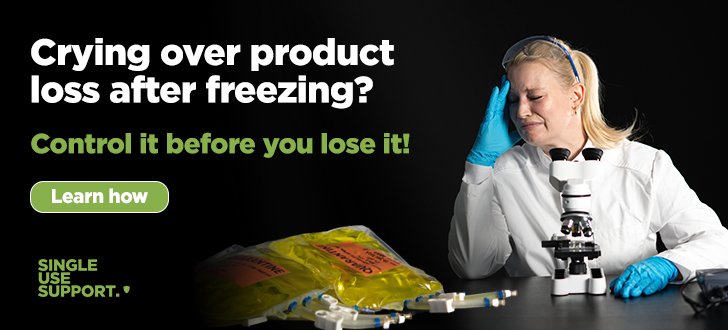Transdermal patches: the next frontier in global healthcare
10 June 2022 | Friday | News

Gareth Sheridan is CEO and Founder of Nutriband. To learn more, please visit www.nutriband.com.
This may come as a surprise, but transdermal and topical technology has been in existence long before injections, and pills became the norm. Ancient history has examples of people curing ailments by applying lotions, gels, creams, and ointments to people’s skin. While these historical applications lacked the rigor of today’s scientific standards, history shows the human race has long believed in the benefits of topical and transdermal solutions for pain relief, and for curing ailments.
Modern medicine began to embrace transdermal drug delivery systems as early as 1979 when the Food and Drug Administration (FDA) approved Scopolamine, the first transdermal treatment for motion sickness. That first patch was approved just two years before a Nitroglycerin patch was approved by the FDA to prevent angina (chest pain) caused by coronary artery disease. Despite these early innovations, patch technology didn’t enter the zeitgeist until the early 1990s with the emergence of the Nicotine patch, introduced in 1991.
Fast forward to the early 21st century, and our ancestors’ primitive techniques have been replaced by high-tech transdermal technologies, which apply to a vast array of medications today. While transdermal technology may never claim to be the most-used administration route, we are seeing growth in the transdermal sector year over year, with applications becoming feasible for more and more drugs and conditions.
Transdermal technology demonstrates numerous advantages over other routes of administration, such as oral or injectables. The release profile of some patches allows one patch to be worn for a whole day or up to a week in some cases, replacing multiple doses at varying times. This in itself reduces the potential for accidental overdose or misuse in scenarios where people take too many pills in a given period of time. Furthermore, I believe that, given the opportunity, many patients would choose a discreet patch over multiple pills or injections.
I believe that transdermal is the future of innovative drug delivery and that the pharma sector’s focus should be on improving existing treatments, while also looking at transdermal applications as an alternative to those treatments historically injected or taken orally. We have initially focused our efforts on creating an abuse-deterrent formulation for opioid-based transdermal drugs, starting with public enemy number one: Fentanyl.
Public enemy number one
Fentanyl patches provide many advantages over alternative administration routes including prevention of side effects, vomiting and accidental overdose further bolstered by only needing to be administered every three days to a week. While fentanyl is primarily used for the treatment of chronic pain, unfortunately, it has a high-risk profile for abuse even in patch form.
According to a recent CDC report, overdose-related deaths were estimated to have exceeded 100,000 over a 12-month period for the first time in the history of the United States, with opioids accounting for 75 percent of those deaths. The same 2021 CDC report went on to show that the total number of deaths had increased by 28.5 percent year-on-year, a time at which the COVID pandemic was at its peak and perhaps masking the problem.
Improving the safety profile of existing transdermal opioid-based drugs is of utmost importance. In the global transdermal space, there are currently no marketed transdermal patches that have abuse-deterrent features. Given the potency of fentanyl, often 50 times more potent than heroin, and its potential abuse profile, transdermal patches and strips provide a simple solution to a complicated problem.
Advanced abuse-deterrent technology can be utilized to incorporate aversive agents into almost any transdermal patch with the goal to prevent the abuse, diversion, misuse and accidental exposure of drugs with abuse potential. The industry goal needs to be to provide technology with Fentanyl and then replicate the process down the entire opioid family of transdermal patches. With that, we can potentially help reduce abuse and overdose rates. Perhaps equally as important, is aiming to make these products safe so that patients who rely on them for pain management can access them without fear of the stigma associated with these products from a prescribing standpoint.
To thrive at the frontier of any area in global healthcare, you must take a step back, assess the current problems facing the space you are in and aim to solve large issues which may prevent industry growth. By creating an abuse-deterrent technology which is initially focused on transdermal opioids, we hope to revolutionize the safety profile of transdermal based pain treatment. Transdermal is in such an area of technological advance that improving the delivery of existing treatments can be just as innovative as applying transdermal technology to injectable or oral drug candidates.
By creating a technology to improve the safety profile of a problem patch such as fentanyl, we can set a foundation to build toward a bright future for transdermal technology to be a trusted delivery method, to innovate and to stand up as a reputable technology. While we can’t predict the future and say what the pipeline of transdermal drugs will look like in 10 or 20 years, we already see that transdermal patches are being used to treat menopause, pain, nicotine addiction, motion sickness and much more.
The introduction of transdermal technologies such as microneedles, dermal ablation and new excipients has allowed drug companies to look at certain applications that seemed impossible only 15 years ago. Patch-based fertility and diabetes treatment are two areas that I am confident we will see breakthroughs in the near future. In another 5 - 10 years perhaps needles for diabetics will be lost in the archives while patches take over, who knows given the innovative trends the last decade has shown us.
Gareth Sheridan is CEO and Founder of Nutriband. To learn more, please visit www.nutriband.com.
Most Read
- Management of Relapsed/Refractory Multiple Myeloma
- 2025 Drug Approvals, Decoded: What Every Biopharma Leader Needs to Know
- BioPharma Manufacturing Resilience: Lessons From Capacity Expansion and Supply Chain Resets from 2025
- APAC Biopharma Review 2025: Innovation, Investment, and Influence on the Global Stage
- Top 25 Biotech Innovations Redefining Health And Planet In 2025
- How Health Systems Are Reshaping Drug Adoption, Partner Models, and Market Access in 2026
- The New AI Gold Rush: Western Pharma’s Billion-Dollar Bet on Chinese Biotech
- Single-Use Systems Are Rewiring Biopharma Manufacturing
- The State of Biotech and Life Science Jobs in Asia Pacific – 2025
- Asia-Pacific Leads the Charge: Latest Global BioSupplier Technologies of 2025
- Invisible Threats, Visible Risks: How the Nitrosamine Crisis Reshaped Asia’s Pharmaceutical Quality Landscape
Bio Jobs
- The State of Biotech and Life Science Jobs in Asia Pacific – 2025
- Avantor’s New CEO Ligner Aims to Unlock Global Potential and Deliver Shareholder Value
- AstraZeneca Commits $50 Billion to U.S. Expansion by 2030 in Biggest-Ever Global Investment
- Thermo Fisher, SAMRC, and South Africa’s Department of Science and Innovation Launch CATIR to Nurture Next-Gen Scientists
- Cube Biotech Appoints Former Sartorius CEO Dr. Joachim Kreuzburg to Board of Directors
- FDA’s AI Transition Marks a Turning Point in Drug Review: Industry Faces Pressure to Adapt Amid 20% Workforce Cut
- WuXi XDC Completes Mechanical Build of Singapore Bioconjugate Manufacturing Hub
News
Editor Picks











